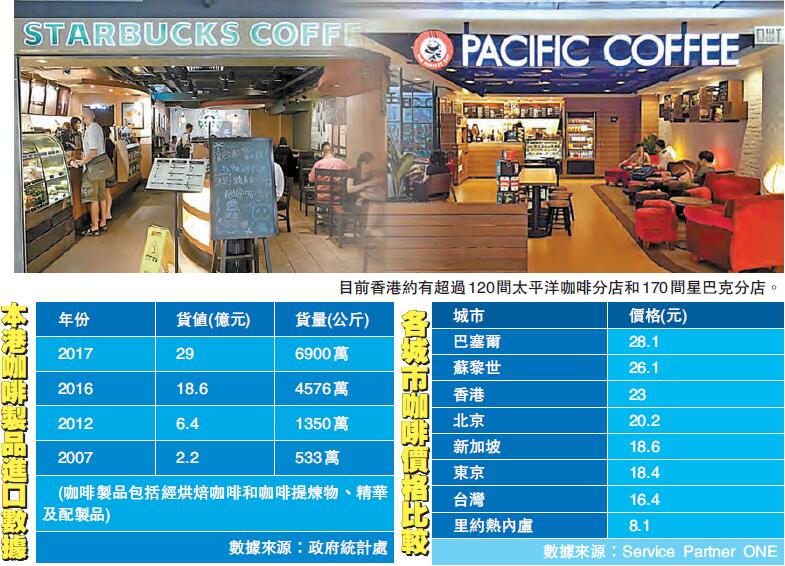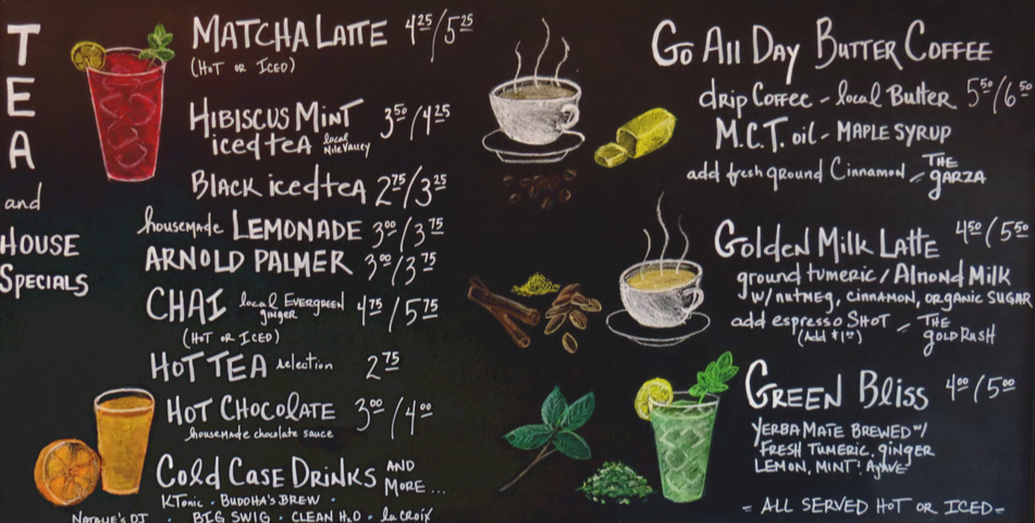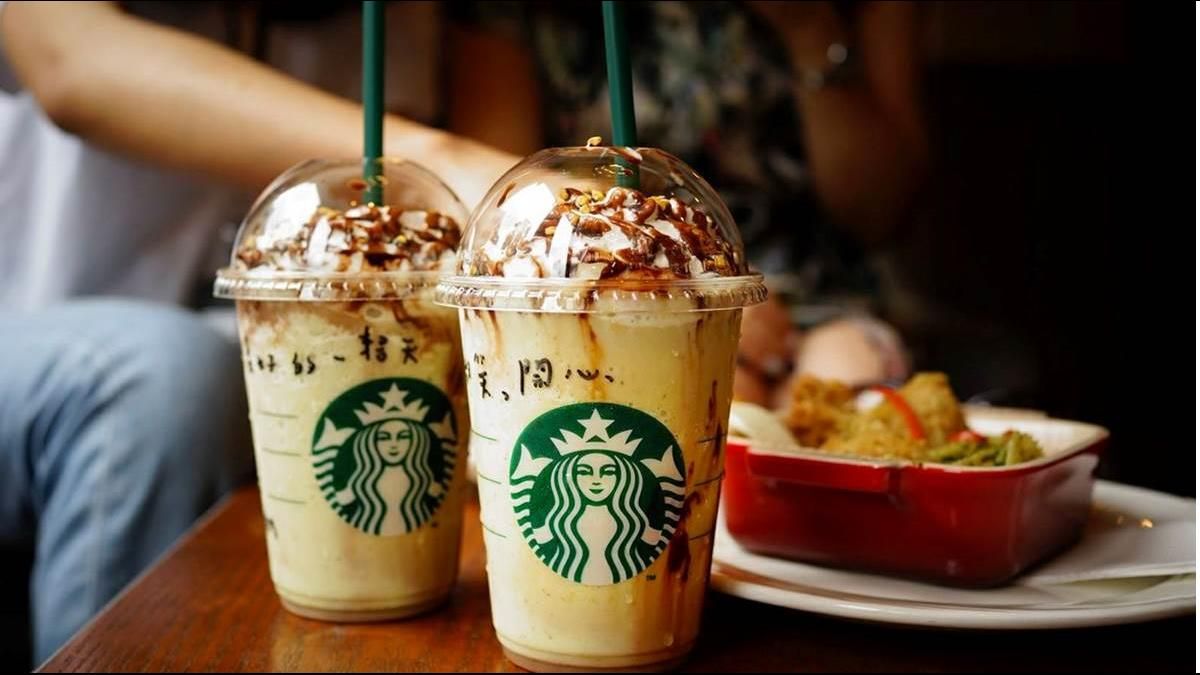How should Starbucks VS Pacific Native Coffee Brand find a way out

Professional coffee knowledge exchange more coffee bean information please follow the coffee workshop (Wechat official account cafe_style)
Source: Hong Kong Business Daily
Walking in Central, many white-collar workers who wear suits and step on leather shoes in a hurry will take it in their hands. A cup of coffee. Although they call themselves "migrant workers in Central", white-collar workers are happy with coffee with an average of 40 or 50 yuan per cup. The former Financial Secretary, John Tsang, once said that "the middle class may not be subject to salary restrictions, but an attitude towards life, such as drinking coffee and watching French movies". There is no denying that coffee has become a middle-class and white-collar attitude towards life. Hong Kong Business Daily reporter Pan Jing
Of course, it's not just the middle class that can afford coffee. For office workers who are tired of work, coffee has a refreshing effect, and some studies have even found that coffee can make people happier. Coffee culture comes from the outside, and now it has gradually matured in the Hong Kong market. According to local media estimates, the average annual coffee consumption of Hong Kong people in 2014 was 250 cups, which shows that coffee has become popular in all walks of life. Starbucks in Hong Kong once had a famous saying about the significance of cafes to office workers: apart from offices and residences, coffee shops have become the "third place" most frequently visited by office workers.
Coffee consumption in Hong Kong is increasing year by year
Hong Kong's coffee imports increased by 124% between 2004 and 2014, according to the Census and Statistics Department. In 2017, Hong Kong's imports of roasted coffee and coffee extracts, extracts and ingredients exceeded 2.9 billion yuan, with a volume of 69 million kilograms.
The number of coffee shops in Hong Kong is even larger. As the two largest brands in the market, there are currently more than 120 Pacific Coffee outlets and 170 Starbucks branches in Hong Kong. If McDonald's McCoffee and some niche brands are included, the number of coffee shops in Hong Kong will be even greater.
Big and small brands have different priorities.
Although the Hong Kong coffee market is rich in variety, the two major competitors in the ring are always Pacific Coffee and Starbucks Coffee. Starbucks needless to say, while Pacific Coffee was founded in Hong Kong in 1992 by Thomas Neir and his wife from Seattle, USA. However, Pacific Coffee was acquired by Chevalier International (025) in 2005, and China Resources Entrepreneurship (stock code 291 before delisting on the Hong Kong Stock Exchange) acquired another 80% stake from Chevalier Pan Asia in 2010, making it the largest shareholder of Pacific Coffee. So strictly speaking, Pacific Coffee can be described as "native" Hong Kong "local ginger".
Starbucks landed in Hong Kong in 2000. Thomas Neir said in an interview with the media that in the past, when there was only Pacific Coffee in Hong Kong, its strength was limited. After Starbucks entered the Hong Kong market, it did a lot of promotion, which to a certain extent promoted the development of the Hong Kong market. Some local media have estimated that Starbucks and Pacific have a market share of about 80% in Hong Kong.
Of course, large chains such as Starbucks and Pacific represent only the "fast food" culture of coffee, and boutique coffee is also the choice of many coffee lovers in the mature Hong Kong market.
In the face of the financial advantages of large chain brands, local small brands focus on high-quality products. What is the meaning of boutique? Niche and hand-cooked products are obviously different from the assembly line products of large chain stores, have more personality and selling points, and are more attractive to customers who understand coffee and pursue surprises and surprises. In recent years, more and more local boutique cafes have been opened in Hong Kong. Thanks to the low-cost promotion of the Internet, such cafes are often online "celebrity shops" and "sign-in resorts" for tourists.
Creating boutique: an opportunity for local brands
After more than a decade of development, Hong Kong people have become very receptive to coffee. Coupled with the entry of McDonald's McCoffee into Hong Kong, Hong Kong has opened up a civilian coffee market with a wider coverage. Is the coffee market in Hong Kong saturated? Take San Francisco in the United States as an example. There are more than 300coffee shops in San Francisco with a population of 770000. With such a density, Hong Kong should have 3000 coffee shops to be considered saturated, so there is still some room for growth.
However, in addition to the Pacific, which has been sold to China Resources, there are not many 100% Hong Kong-flavored and well-known Hong Kong brands. In the face of the squeeze of big brands, local brands still lack some financial support and promotion to break out.
For Hong Kong brands, the proximity to the mainland is a potentially huge market, which has great potential to attract investors and consumers.
For example, HABITU, a local coffee brand with more than 30 stores in Hong Kong, has seen the potential of the mainland coffee market in recent years. For local coffee brands, because they have been rooted in the Hong Kong market for many years, they have experienced the period when consumers blindly pursue big brands, and they have a deeper understanding of coffee culture. "boutique" is the advantage of the development of local coffee brands. Besides, you know what? With the upgrading of consumption in the mainland, mainland consumers, especially young people, are bound to have an increasing demand for personalized coffee, and this is also an opportunity for the development of local brands.
The higher the GDP, the more coffee shops?
When it comes to the relationship between coffee shops and the economy, some mainland media have made statistics. They calculated up to 12 cities with Starbucks stores in the mainland (2017 data) and compared their GDP (2017 data) and found that the number of Starbucks stores was roughly positively correlated with the city's GDP. In addition, even DTZ, one of the "big five", has released a study saying that cities with more Starbucks tend to have higher levels of economic development.
If the data from Hong Kong are substituted, Starbucks stores in Hong Kong rank third among all mainland cities, and Hong Kong's GDP ranks third among all mainland cities in 2017, second only to Shanghai and Beijing.
This also leads to the Starbucks Index, which means that the more Starbucks there are in a city, the more prosperous the city is. However, due to the large number of cafes, when consumer confidence in the economic downturn declines, non-essential items such as coffee shops will also be more affected. So Gross, an American economic columnist, has a deeper interpretation of the Starbucks Index: the more Starbucks stores, the higher the risk of financial crisis.
Priority over the location of first-tier cities
This statistics is very interesting, but the author believes that it is not that the more Starbucks, the better the urban economy, but the more cities with good economy, the more Starbucks.
First of all, the reason why Starbucks is compared with Starbucks is that there are many types and brands of coffee, Starbucks is well-known and has a large number of stores, which is different from the relatively cheap instant coffee. Starbucks is not essential in diet, but also reflects the upgrading level of consumers' consumption.
Secondly, just like at the beginning of the economic take-off in the mainland, the first McDonald's and KFC must be opened in first-tier cities. Whether it is Starbucks or other coffee brands, the preferred target is of course cities with a large population and developed economy. Cities with higher GDP rankings are more receptive to the foreign culture of coffee, coupled with high per capita income, and are naturally more able to consume such high consumer goods.
Finally, as the economy develops to a certain stage and consumers' income increases, the upgrading of consumption arises at the historic moment, which is the period of great outbreaks such as catering, cinemas and coffee shops. With an economic base, the public will naturally have more time to slow down their thinking and savor life.
Cost of coffee drinking in Hong Kong is the sixth highest in the world
Apart from the large number of coffee shops in Hong Kong, the cost of drinking coffee is also very high. According to the 2016 coffee price index of 75 largest cities in the world, the cost of drinking a cup of coffee in Hong Kong is as high as 2.39 pounds (about 24 Hong Kong dollars), making it the sixth most expensive.
As for the high cost of coffee in Hong Kong, the crux of the problem naturally lies in labour and rent. If you hire a coffee maker in Hong Kong for at least NT $10,000, you don't have to say much about the high rent. Coupled with the fact that coffee is the most important thing about "feel", the decoration of the shop is naturally exquisite, and these costs can only be added to the coffee.
END
Important Notice :
前街咖啡 FrontStreet Coffee has moved to new addredd:
FrontStreet Coffee Address: 315,Donghua East Road,GuangZhou
Tel:020 38364473
- Prev

On the importance of streamlining the menu in coffee shops! Coffee shop menu shorter business is better?
Professional coffee knowledge exchange More coffee bean information Please pay attention to coffee workshop (Weixin Official Accounts cafe_style) Starbucks has always been known for its rich and diverse beverage choices. However, Starbucks in Taiwan has quietly adjusted its product structure recently. Since 1/23, hot drinks will no longer be available in small cups, leaving only 5 long-selling drinks to retain small cup options, such as latte, American, etc. Starbucks, actually.
- Next

Starbucks "untold Secrets"! The US media exposed five "careful machines" in Starbucks' operation.
Professional coffee knowledge exchange more coffee bean information please follow the coffee workshop (Wechat official account cafe_style) recently, the US media "Business Insider" reported that Starbucks actually has five careful machines in its operation! Since Chinese mainland joined Starbucks 20 years ago, more and more people have come into contact with freshly ground coffee through Starbucks, although many people complain about Starbucks coffee.
Related
- What documents do you need to go through to open a coffee shop? coffee shop coffee shop certificate processing process
- How to purchase Coffee beans in small Cafe how to choose a suitable supplier for domestic Coffee supply Company
- How to drink Starbucks Fragrance White Coffee? how to make Australian White Coffee? what Italian coffee beans are recommended?
- The Story of Flora Coffee: the name of Flora Coffee Bean and the implication of the Flowers on Florna Coffee
- How much does a cup of coffee cost? How much is the profit of a cup of coffee? What is the profit of the coffee shop in a year?
- Yunnan small Coffee, known as "fragrant Coffee", introduces the characteristics of Alpine Arabica Coffee producing areas in Yunnan, China
- 2023 latest Starbucks full menu price list how much is a cup of Starbucks coffee what is better to drink the most popular hot and cold drinks recommended
- Starbucks different kinds of Coffee Price list Starbucks menu 2023 Top Ten Best drinks in Starbucks
- Starbucks Spring praise Comprehensive matching Coffee Bean theme Story Packaging implication and taste description
- The cost of a cup of coffee latte American coffee cost price and selling price

